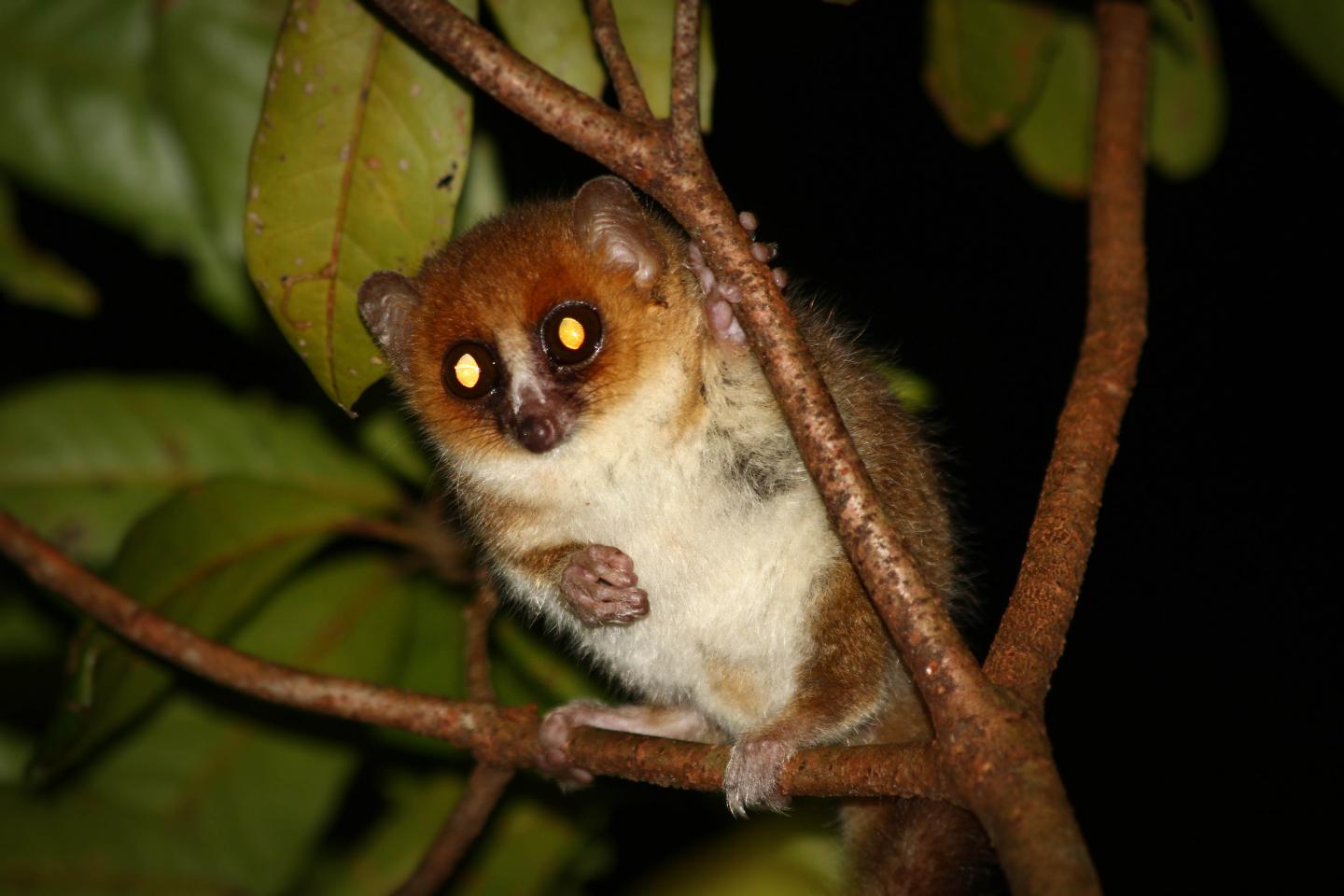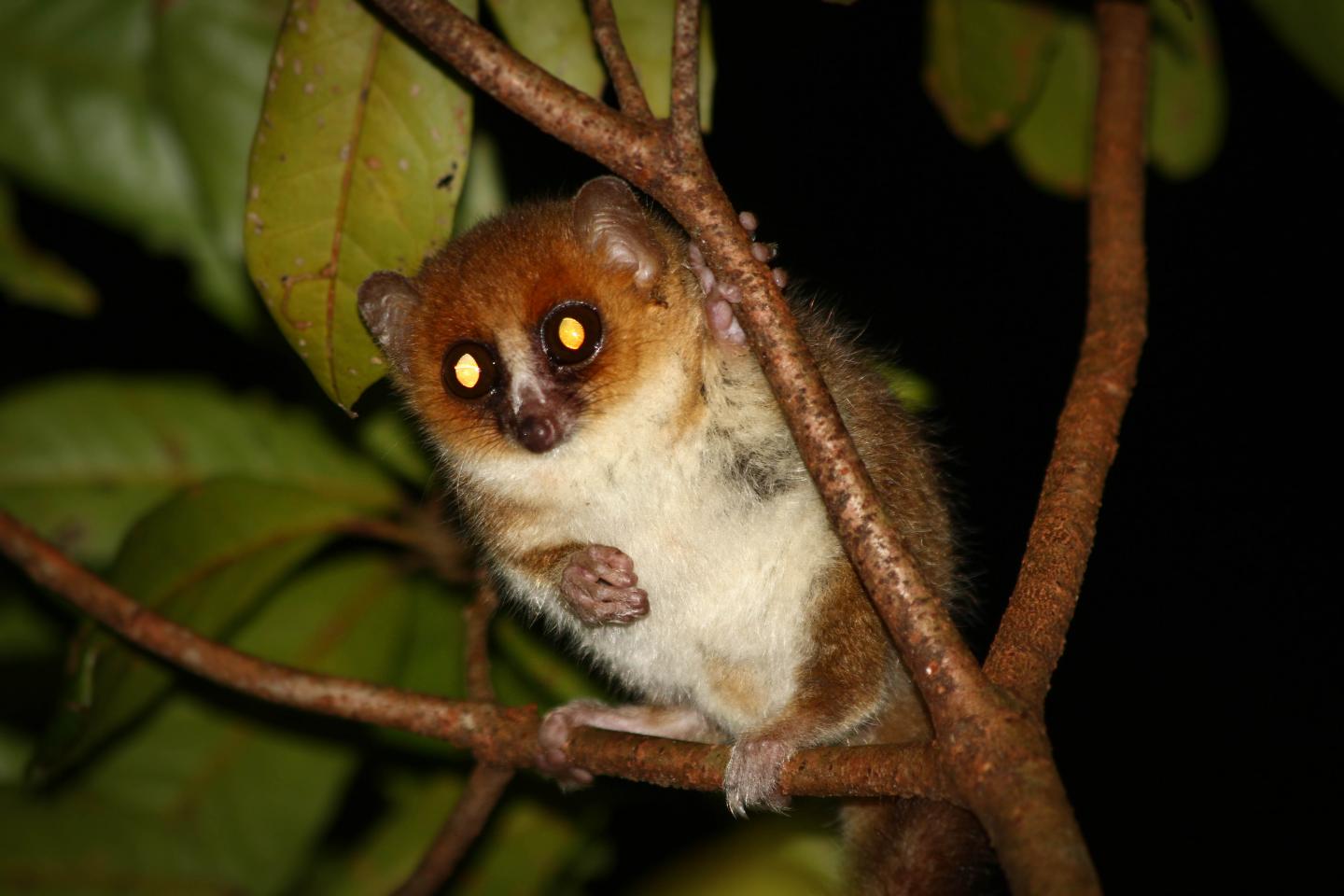
Credit: George Selley
Lemurs are primates like us, but they're the weird cousins. They're found only on Madagascar off the coast of Africa, and they fight by secreting smelly paste from their shoulders and using their tails to waft the scent at their rivals. Some lemur species become inactive or hibernate when food is scarce, and other species eat all day and all night to get enough nutrients. Another thing that sets them apart is their diet — most primates eat a fruit-heavy diet, but lemurs primarily eat leaves. A new study in Scientific Reports sheds light on why lemurs don't eat as much fruit as their fellow primates and why they've developed these odd dietary behaviors — the fruit on Madagascar contains too little protein to sustain them.
"Lemurs are equal parts ridiculously cool and totally bizarre in that they represent the extremes and the extremely strange in the primate world," says Abigail Derby Lewis, a senior conservation ecologist at The Field Museum in Chicago and one of the study's authors. "This study is about investigating why we see certain patterns in the world."
Scientists have long known that lemurs' diets are unusually leafy for primates, but they weren't sure why. Hypotheses ranged from food scarcity to frequent cyclones on Madagascar making it hard for lemurs to find all the fruit they needed, so they turned to leaves instead. However, the new study indicates another culprit for the lemurs' odd diets — fruit that's too low in protein.
Proteins, whether consumed via meat, fruit, or a giant tub of whey powder from the vitamin store, are key to an organism's makeup and survival. Often called "the building blocks of life," they're chains of chemicals called amino acids with different sequences used for different functions, from building muscles to transporting oxygen.
In this study, scientists compared the amount of protein in fruits from 62 forest sites in Africa, Asia, and the Americas. They looked at the amount of nitrogen in the fruits, since nitrogen is a key ingredient in protein. Derby Lewis gathered data in Ecuador, collecting scraps of fruit dropped by howler monkeys and climbing trees to pick pieces of fruit from the same branches the monkeys had been eating from. These samples, along with others from around the world, were taken to the University of Hamburg and analyzed for nutritional content, including the percent of protein and the protein-to-fiber ratio.
The team saw a correlation between the amount of nitrogen in fruits from a given region and the degree to which animals, especially primates, in those regions relied on fruits for food. In the Americas, where the fruit was high in nitrogen, animals ate more fruit than the animals in nitrogen-poorer Africa and Asia. Madagascar's fruit had the least nitrogen of all, and most lemurs make do without much fruit in their diets.
These results led the scientists to believe that the amount of nitrogen in Madagascar's fruit was a driving force in lemurs' behavioral evolution. Since the lemurs couldn't get the protein they needed from fruit, they developed other ways of getting by: eating more leaves, hibernating to conserve energy, and eating around the clock to get the nutrients they needed."
Our results add an additional dimension to the existing hypotheses depicting the island of Madagascar as an ecologically challenging environment for primates," says Guiseppe Donati of Oxford Brookes University, the study's lead author. "The low nutritional quality of the fruits in Madagascar may have caused lemurs to differentiate their diet and develop some of the unique traits that we can see today."
Derby Lewis emphasizes the importance of this study from a conservation perspective. "Lemurs are the most endangered group of mammals on earth, and knowing how and why they evolved in the direction they have–from their diet, to social structure and cognition–is crucial in helping to inform effective conservation approaches," explains Derby Lewis. Plus, she adds, "A deeper knowledge base regarding what factors may have shaped the dietary behaviors of our fellow primates is an important lens for understanding how and why humans evolved along the dietary pathways that we did."
###
Media Contact
Kate Golembiewski
[email protected]
312-665-7103
@FieldMuseum
http://www.fieldmuseum.org





